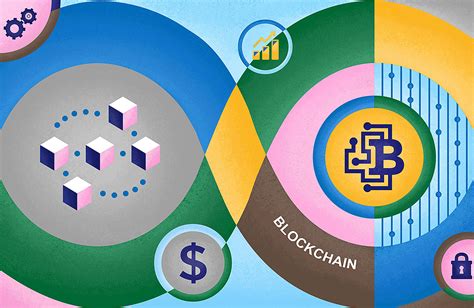区块链与比特币的关系是什么
Title: Unraveling the Power of Blockchain and DeFi in a Comprehensive Presentation
Introduction

In the realm of finance and technology, Blockchain and Decentralized Finance (DeFi) have emerged as revolutionary forces, transforming traditional systems and offering unprecedented opportunities. This presentation aims to delve into the intricacies of Blockchain and DeFi, exploring their functionalities, benefits, challenges, and future potentials.
Understanding Blockchain Technology
Blockchain serves as the underlying technology for various cryptocurrencies, including Bitcoin and Ethereum. At its core, it is a decentralized and distributed ledger technology, recording transactions across a network of computers. The key components of Blockchain include:
1.
Decentralization:
Transactions are recorded on a network of computers (nodes), eliminating the need for a central authority.2.
Transparency:
All transactions are publicly recorded and can be verified by anyone on the network.3.
Immutability:
Once a transaction is recorded on the Blockchain, it cannot be altered or deleted, ensuring data integrity.4.
Security:
Blockchain uses cryptographic techniques to secure transactions, making it resistant to fraud and hacking.Introduction to DeFi (Decentralized Finance)
DeFi represents the integration of traditional financial services with blockchain technology, enabling peertopeer transactions without intermediaries. Key features of DeFi include:
1.
Open Access:
DeFi platforms are accessible to anyone with an internet connection, fostering financial inclusion.2.
Interoperability:
DeFi protocols are designed to work seamlessly with each other, creating a connected ecosystem of financial services.3.
Transparency:
Similar to Blockchain, DeFi transactions are transparent and verifiable on the blockchain.4.
Liquidity Provision:
DeFi platforms facilitate the lending and borrowing of digital assets, allowing users to earn interest on their holdings.Advantages of Blockchain and DeFi
1.
Financial Inclusion:
Blockchain and DeFi remove barriers to access financial services, particularly in underserved regions.2.
Reduced Costs:
By eliminating intermediaries, Blockchain and DeFi reduce transaction fees and operational costs.3.
Faster Transactions:
Transactions on Blockchain are processed much faster compared to traditional banking systems, enabling nearinstantaneous transfers.4.
Security:
The cryptographic nature of Blockchain ensures that transactions are secure and tamperproof, reducing the risk of fraud.Challenges and Risks
1.
Regulatory Uncertainty:
The regulatory landscape surrounding Blockchain and DeFi is still evolving, leading to uncertainty and potential regulatory challenges.2.
Smart Contract Risks:
DeFi platforms rely on smart contracts, which are susceptible to bugs and vulnerabilities, leading to potential financial losses.3.
Scalability:
As Blockchain networks grow in size, scalability becomes a significant challenge, leading to congestion and slower transaction speeds.4.
Security Concerns:
While Blockchain is inherently secure, individual users may fall victim to hacking, phishing, or other cyber threats.Future Outlook
Despite the challenges, the future of Blockchain and DeFi appears promising. With ongoing innovation and advancements in technology, we can expect:
1.
Broader Adoption:
As awareness and understanding of Blockchain and DeFi grow, we anticipate broader adoption across industries and sectors.2.
Increased Regulation:
Regulatory clarity will likely increase as governments and regulatory bodies adapt to the growing influence of Blockchain and DeFi.3.
Interoperability:
Efforts to enhance interoperability between different Blockchain networks and DeFi platforms will continue, creating a more connected ecosystem.4.
Enhanced Security:
Continued efforts to improve security protocols and standards will mitigate risks and bolster confidence in Blockchain and DeFi.Conclusion
Blockchain and DeFi represent a paradigm shift in finance, offering decentralized, transparent, and secure alternatives to traditional systems. While challenges remain, the potential benefits are vast, ranging from financial inclusion to reduced costs and increased efficiency. By understanding the fundamentals and staying abreast of developments, we can harness the power of Blockchain and DeFi to shape a more inclusive and equitable financial future.
[Note: This presentation is for informational purposes only and does not constitute financial or investment advice. Please conduct your research or consult a financial advisor before making any investment decisions.]









